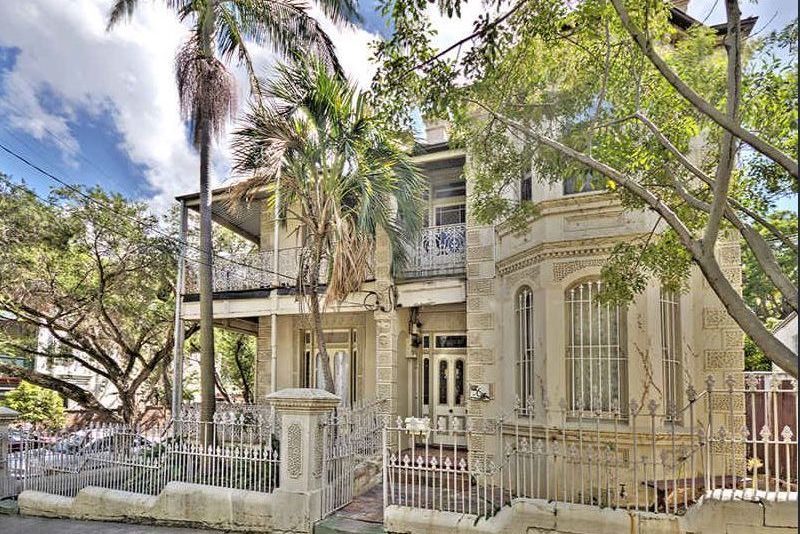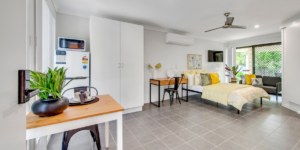NSW Planning is currently considering a raft of changes to its housing diversity regulations, which could affect private investors and ultimately result in fewer affordable housing options. Read my article in The Fifth Estate to find out what needs to change.
What must be fixed before the NSW’s Planned Housing Diversity SEPP can do what it sets out to do.
By Ian Ugarte, thefifthestate.com.au, September 28, 2020.
While the New South Wales government’s revamped housing diversity policy is being touted as the answer to the state’s shortfalls in affordable housing, I believe the unintended consequences may have the opposite effect.
The proposed changes (Housing Diversity SEPP) are far more likely to suffocate future supply. This is due to the removal of provisions that allow private micro-investors to convert their empty, unaffordable investment properties into four or five micro-apartments, which would supplement housing supply with genuinely affordable accommodation options.
We already know that NSW has the highest proportion of low-income households experiencing rental stress (76 per cent, compared to the national average of 68 per cent). Nonetheless, these proposed changes will exclude mum and dad investors, who make up 96 per cent of all housing stock in NSW, from playing a key role in helping meet the rapidly growing demand for affordable housing – a role they can play in every other state and territory in the country.

So, what are the proposed “co-living” provisions?
The existing policy, which was put in place by a progressive government in 2009, allows for flexibility and affordability when it comes to co-living arrangements, and it introduced the concept of micro-apartments.
While the current legislation labels these developments as “boarding houses”, they’re a far cry from the traditional boarding houses of the past. These are co-living homes, created within your typical four-bedroom, two-bathroom home, converted to four to five micro-apartments, each with their own bathroom, bedroom and kitchenette facilities and communal living and/or kitchen.
Micro-apartments move communal living beyond the clutches of the boarding houses of old, to more community-oriented, truly integrated co-living spaces for small groups of singles or couples in low-density residential areas.
One of the best things about the current co-living arrangements is that normal mum and dad investors are able to create these affordable housing options within a standard domestic dwelling – giving residents access to affordable accommodation, and a small community of people wrapped around them. And right now, that’s more important than ever.
But the benefit that shouldn’t be overlooked is how much the existing provisions truly integrate affordable living options within residential areas that are typically out of reach for these residents.
Unfortunately, the proposed policy introduces strict controls on the areas that will accept co-living accommodation like this. It will flush out these housing options from low-density residential areas to the outer suburbs, creating an even greater social divide between the haves and have-nots.
SCROLL DOWN to find out why I’m leading the charge to change the Housing Diversity Planning Policy in NSW

How would these proposed changes affect housing affordability in New South Wales?
No doubt, the worst thing about these proposed changes is the adverse effect they will have on housing affordability in NSW since they effectively exclude private investors from being able to play a role in contributing to supply.
By setting a 10-room minimum and dictating much larger dimensions per room, not only are they ensuring that rents being charged will increase, they’re also pricing mum and dad investors out of the market and giving a monopoly to big-end-of-town developers that are beholden to shareholders and their bottom line.
And since it won’t make financial sense to invest in smaller housing developments, the pendulum will swing back to the Macquarie Fields style housing commission towers of old. And we all know how that turned out, don’t we?
Conversely, co-living housing opportunities and micro-apartments are currently used very effectively as affordable housing options for people who are professionals, couples starting out, people who are looking for a way to save up for their own place while renting and domestic violence survivors.
Do we really want to shunt these people to the outer suburbs with its limited public transport options and infrastructure? How are they supposed to build a better life for themselves if they’re removed from the social fabric of friends and family, along with the amenities they need to get ahead?
The changes needed to the new co-living provisions.
I believe the sensible alternative is to retain the provisions that effectively protect these affordable housing options, like micro-apartments, and combat social isolation because they create a genuine community.
This would mean that private investors country-wide, particularly those in pain due to economic stress and negative gearing, can continue to do these property conversions and not only ease their own financial pain by creating positive cash flow, but continue to build beautiful micro-apartment communities in just a matter of weeks.
This is a far cry from the length of time we’re contemplating if this role was exclusively played by Community Housing Providers or big-end-of-town developers where we’d be looking at months, if not years for the equivalent in housing supply – precious time people in need just don’t have.
Currently, each state has a policy that allows you to create co-living micro-apartments within low-density residential zones. But if the current provisions are enacted, NSW will be the only state in the country where this is no longer possible.
SEE HOW students Brian and Lisa achieved a 10%+ return on their co-living micro-apartment conversion HERE

But now is not the time for navel gazing.
I welcome the policy intent of the proposed Housing Diversity SEPP but feel its objective is unlikely to be realised unless more recognition is given to the important role private investors play in providing affordable housing supply to the people of New South Wales.
As a collective, we need to ensure they don’t have their abilities to create affordable housing communities in otherwise vacant properties stripped bare, and then handed over to big business and Community Housing Providers, who have a role, but NOT the whole role.
We need to protect the policies that support private investors developments that provide affordable housing in the shortest time possible and all without placing a burden on the public purse.
LEARN MORE about the proposed SEPP changes in my interview with TICKER TV HERE
FIND OUT how you can invest in affordable micro-apartment co-living properties in your state HERE






